The Ameraucana chicken is a unique breed of chicken that is known for its beautiful blue-colored eggs.
These chickens have gained popularity in recent years due to their unique appearance and great personalities.
They are known for being friendly, docile birds that are easy to care for.
In this article, we will discuss:
- Ameraucana chicken history and overview
- Ameraucana chicken behavior, appearance, and temperament
- Their egg production
- Health and care requirements for this breed
- Some frequently asked questions
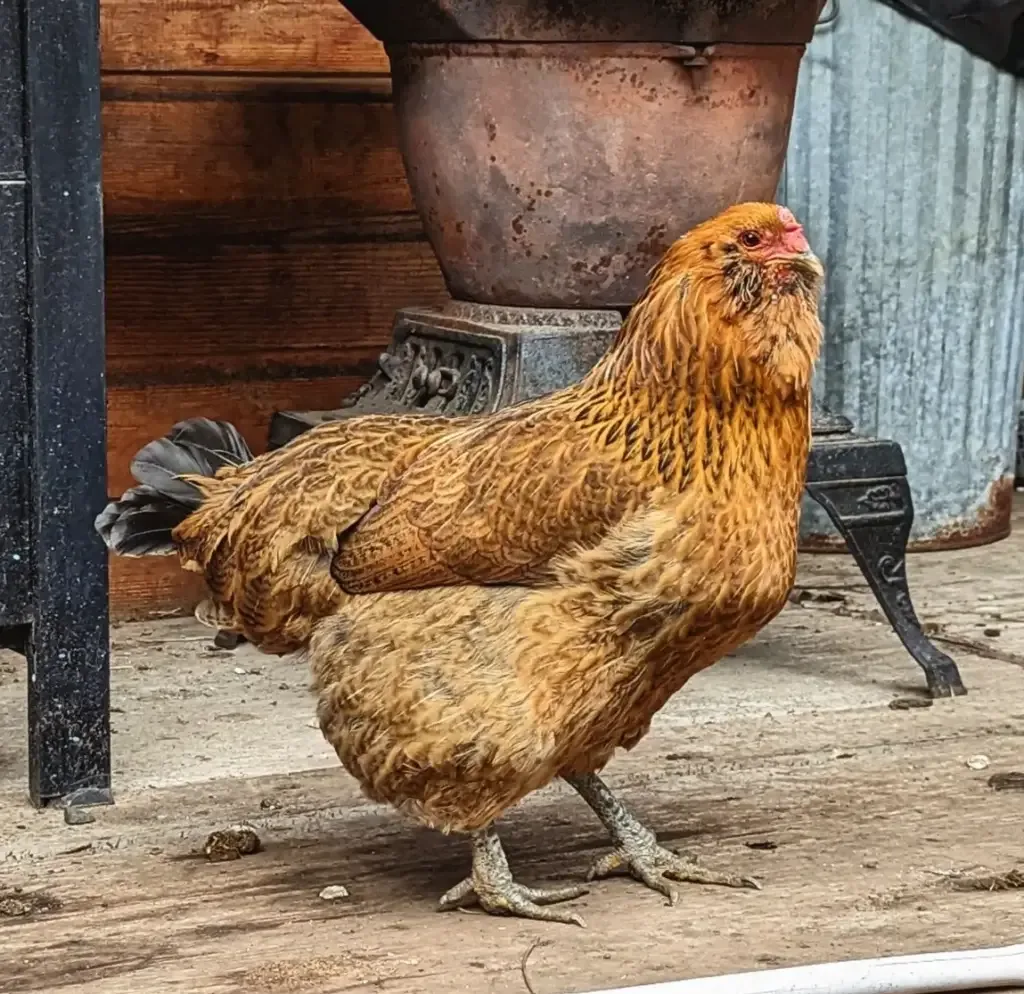
Ameraucana Chicken Overview
| Lifespan | 7-8 years |
| Weight | Hen: 5-6 lbs, Rooster: 6-7 lbs |
| Appearance | Varies |
| Egg Color | Light blue to deep blue |
| Egg Size | Medium |
| Egg Production | 150-220 per year (3-4 per week) |
| Broodiness Level | Low |
| Beginner Friendly | Yes |
| Space Needed | 4 square feet per bird inside the coop, 8-10 square feet each outdoors |
| Price | $5-$10 per chick |

History
The Ameraucana chicken breed has a unique and complicated history that is known to date back to the 1970s in the United States.
They were developed from Araucana chickens that were brought from Chile.
The Araucana chickens were known for their unusual blue-egg gene, but they also had some genetic issues and lethal alleles that caused tufted and rumpless features.
The Ameraucana breed was developed to retain the blue-egg gene while eliminating the lethal alleles.
The history of the Ameraucana breed is intertwined with that of the Araucana breed.
The Araucana chickens were originally from South America, specifically from the Mapuche Indians in Chile.
They were brought to the United States in the 1930s, and breeders started developing birds that had the blue-egg gene with a pea comb.
Some of these birds had ear tufts, some were rumpless, and some had beards and tails.
In 1984, the Ameraucana breed was accepted by the American Poultry Association.
There is also a bantam Ameraucana breed that was accepted by the American Bantam Association in 1979.
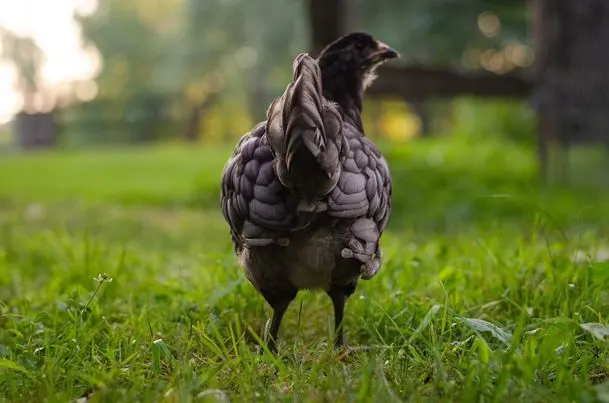
Appearance
Ameraucana chickens are beautiful birds considering their look is somewhat standard.
Their appearance is often confused with Easter Eggers and Araucanas, as they all look incredibly similar.
These chickens are available in both standard-sized and bantam versions.
They have a pea comb and a medium-sized, compact body with an upright, fluffy tail.
The Ameraucana chicken has a variable appearance, with two chickens of this breed rarely looking exactly alike.
They often have a beard and a muff, which make them appear rather fluffy.
Colors
The Ameraucana chicken comes in several recognized colors, including:
- Black
- Blue
- Buff
- Splash
- Silver
- Wheaten
- White
- Red/Brown-Red
The plumage of the Ameraucana chicken is a solid color, and the legs and feet are typically slate blue to black, but can also be other colors depending on the plumage color.
Size
The Ameraucana chicken is a medium-sized breed, with hens weighing around 5-6 pounds and roosters weighing around 6-7 pounds.
Bantam-sized Ameraucanas are smaller and weigh between 24-32 oz.
Distinct Features
One of the most distinctive features of the Ameraucana chicken is its blue eggs.
They also have four toes on each foot, and their legs should be clean of feathering.
Ameraucana chickens are also known for their muff and ear tufts, which are small feathers that grow around the ears and under the beak.

Ameraucana Breed Standards
The American Poultry Association (APA) is a non-profit organization that was established in 1873.
Its primary objective is to promote and protect the standard of perfection for purebred poultry in the United States.
This organization is responsible for maintaining the breed standards for many different types of poultry, including the Ameraucana chicken.
The APA has established a set of standards for the Ameraucana chicken that includes specific requirements for appearance, size, and weight.
These standards are designed to ensure that the Ameraucana chicken is a purebred chicken that meets certain criteria.
The standards are outlined in the APA’s “Standard of Perfection,” which is a guidebook that provides detailed descriptions of the ideal characteristics of each breed of poultry.
According to the APA’s standards, the Ameraucana chicken should have a distinctive blue eggshell coloration.
The APA also recognizes several varieties of Ameraucana chicken, including Black, Blue, Blue Wheaten, Brown Red, Buff, Silver, Wheaten, White, and Self Blue.
Each variety has its own set of standards that must be met in order for the chicken to be considered a purebred Ameraucana.
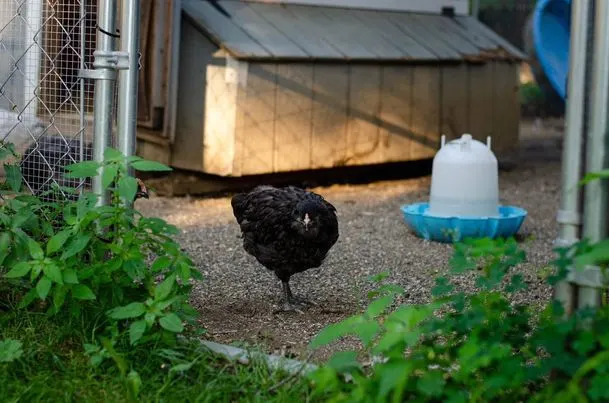
Varieties
The Ameraucana chicken breed is known for its beautiful and unique color varieties.
The American Poultry Association has recognized a total of 23 varieties of the Ameraucana, which include both large fowl and bantam varieties.
One of the most popular varieties of the Ameraucana is the Wheaten variety.
This variety has a beautiful golden color with a fine stripe down the center of its feathers.
The beak of the Wheaten variety is orangish, and its eyes are a reddish-bay color.
Another popular variety is the Blue Wheaten, which has a similar appearance to the Wheaten variety, but with a blue-gray color.
The Ameraucana also comes in a bantam variety, which is smaller in size than the large fowl variety.
The bantam Ameraucana was accepted by the American Bantam Association in 1979.
Other recognized varieties of the Ameraucana include Black, Lavender, and Silver.
Each variety has its own unique color pattern and appearance.
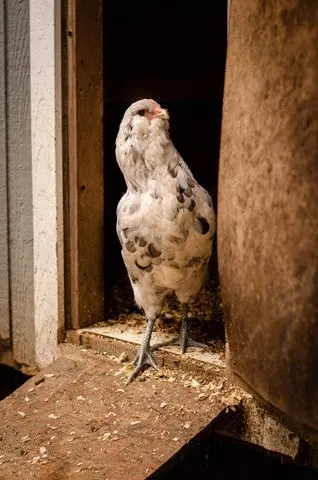
Behavior and Temperament
Ameraucana chickens are known for their friendly and docile nature, making them an ideal breed for backyard flocks and beginners.
They are generally calm and easygoing, and they tend to get along well with other chickens.
Ameraucanas are also great with children, making them a popular choice for families.
These chickens are hardy and adaptable, able to tolerate cold climates well.
They are also good foragers and enjoy free-ranging, although they can do well in confinement if necessary.
Ameraucanas are generally not skittish and can be quite curious, making them a joy to watch in the yard.
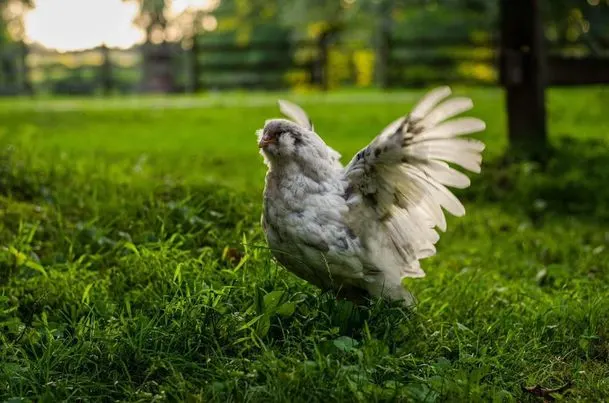
Egg Production
Ameraucana chickens are known for their stunning, uniquely-colored eggs.
They lay medium-sized, blue eggs three to four times per week, which equates to about 150-220 eggs a year (unless the hen goes broody).
After about two years, egg production will continue to drop as the chicken gets older.
Broodiness
Ameraucanas are not particularly broody, meaning they are less likely to sit on their eggs and hatch them.
This can be an advantage if you are not interested in raising chicks, but it can also be a disadvantage if you are trying to hatch eggs for breeding purposes.
If you do want to hatch eggs, you may need to use an incubator or a broody hen from another breed.
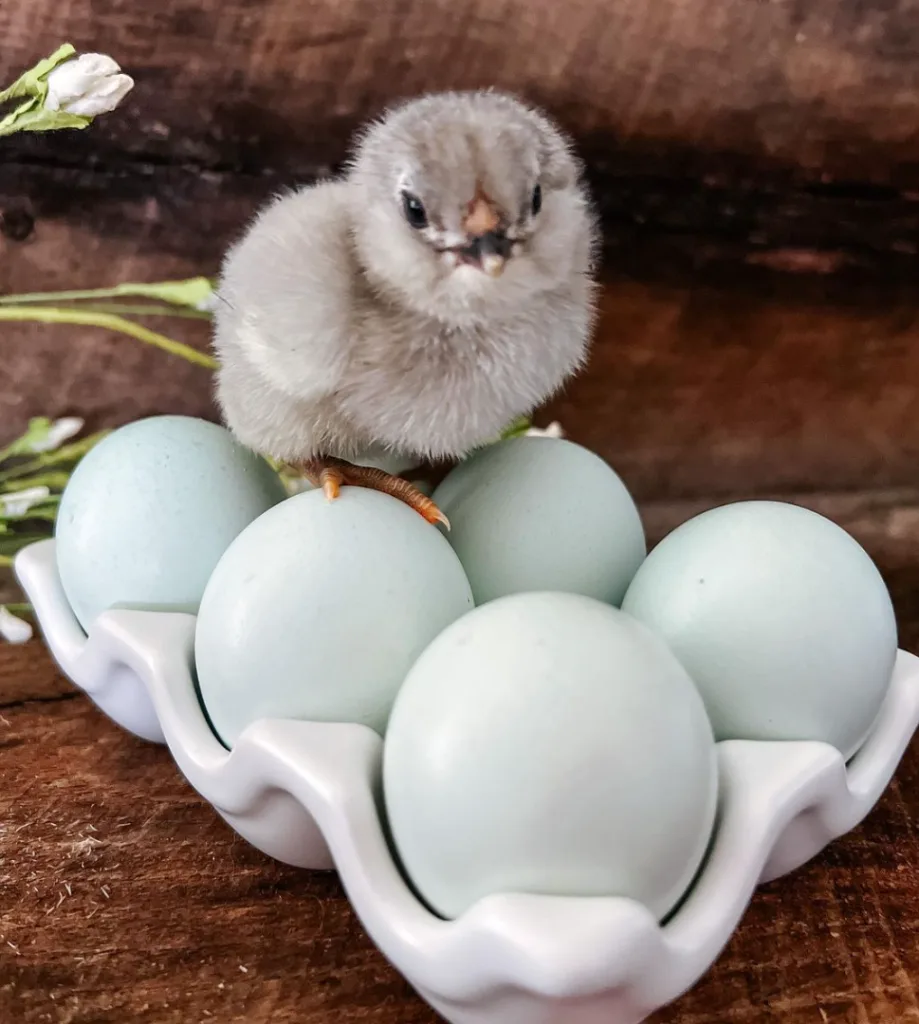
Ameraucana Health and Care
Ameraucana chickens are hardy and will tolerate different temperatures and environments.
However, just like with any other chicken breed, they require a certain level of care in order to thrive.
In this section, we will discuss Ameraucana health requirements such as diet, coop set-up, and some common health issues.
Diet
Ameraucana chickens have the same nutritional requirements as most other chicken breeds.
They need a balanced diet that includes protein, carbohydrates, fats, vitamins, and minerals.
A diet that is high in protein is especially important for egg-laying hens.
You should provide them with a high-end commercial chicken feed with occasional treats like legumes, vegetables, and fruits.
It is also recommended to offer them grit, which helps them digest their food and fresh water should always be available.
Coop Requirements
Ameraucana chickens are hardy birds that can adapt to a variety of environments.
However, they still require certain habitat requirements to stay healthy.
It is recommended to provide them with a coop that is well-ventilated, dry, and clean.
The coop should be spacious enough to allow the birds to move around freely and should have nesting boxes for egg-laying.
The golden rule is to allow 4 square feet per chicken inside the coop and about 8-10 square feet per bird in the chicken run or free-ranging.
Their coop and outdoor area should be secure and protected from predators.
Common Health Issues
Ameraucana chickens are very hardy birds with not many known health issues.
However, like all animals, they are still susceptible to certain health problems.
Some of the common health problems that can affect them include respiratory infections, mites and lice, egg-laying problems, and injuries.
It is important to monitor their health regularly and seek veterinary care if needed.
To prevent health problems, it is recommended to keep their habitat clean and dry, provide them with a balanced diet, and practice good hygiene when handling them.
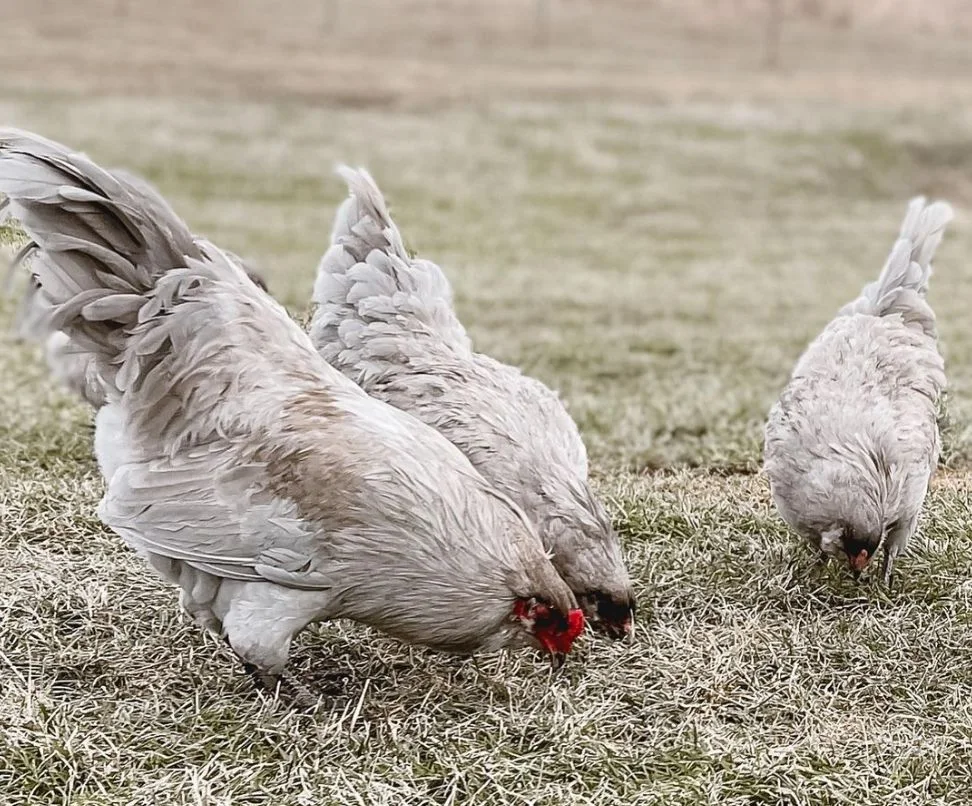
Genetic Traits
The Ameraucana chicken is a breed that exhibits various genetic traits.
One of the most notable traits is the blue egg gene, which is responsible for the blue color of their eggs.
This gene is a result of a mutation that occurred in the Araucana chicken breed, which was then bred with other breeds to create the Ameraucana.
Another genetic trait found in Ameraucanas is the lethal gene.
This gene is responsible for the death of chicks during development, and it is inherited in an autosomal recessive manner.
Breeders must carefully manage their breeding programs to avoid breeding two carriers of the lethal gene, which would result in a high mortality rate in their chicks.
In terms of physical traits, Ameraucanas are known for their muffs and beards, which are a result of a gene that causes feathering around the face.
They also have a pea comb, which is a small, compact comb that is less prone to frostbite than other types of combs.
The breed is also known for its tailed appearance, which distinguishes it from the rumpless Araucana.
Commercial Aspects
The Ameraucana chicken is a popular breed in the commercial poultry industry due to its dual-purpose nature, meaning they are suitable for both egg and meat production.
The hens are known for their excellent egg-laying abilities, producing up to 220 eggs per year and they are known for their blue eggs, which are in high demand in certain markets.
Ameraucana eggs are known for their nutritional value.
They are known to be high in protein, vitamins, and minerals, making them a healthy choice for consumers.
The eggs also have lower cholesterol levels than traditional eggs, making them a good choice for health-conscious buyers.
These birds are also known for their tender meat, making them a good choice for meat production.
In addition to their dual-purpose nature, Ameraucana chickens offer several benefits to commercial growers.
They are hardy birds that can tolerate a range of climates, making them suitable for a variety of farming operations.
They are also docile and easy to handle, making them a good choice for first-time chicken owners.
The price of Ameraucana chickens varies depending on the age, sex, and location of the bird.
Generally, the cost of a day-old chick ranges from $5 to $10, while a mature bird can cost up to $30 and breeders may charge more for rare color varieties.

Final Thoughts
Ameraucana chickens are a great addition to any backyard flock or homestead.
With their beautiful feather colors and ability to lay stunning blue eggs, they are sure to impress.
One thing to keep in mind is that Ameraucanas are a dual-purpose breed, meaning they can be used for both meat and egg production.
However, they are better suited for egg-laying, with an annual production of 150-220 medium to large blue eggs.
When it comes to care, Ameraucanas are relatively low-maintenance, as they are cold-hardy and do well in a free-range environment.
It’s important to provide them with a balanced diet and clean water, as well as adequate shelter and protection from predators.
Overall, Ameraucanas are a great choice for anyone looking to add some color and diversity to their flock, while also enjoying delicious and unique blue eggs.
With proper care and attention, they can provide lots of enjoyment and productivity for years to come.
Frequently Asked Questions
What are the disadvantages of raising Ameraucana chickens?
Ameraucana chickens are great chickens to have around.
However, they can be quite a bit pricier than some other breeds, as chicks will cost between $5-$10 each and a mature hen can cost upwards of $30-$40.
These chickens are also known to slightly struggle in overly warm and humid climates.
What color eggs do Ameraucanas typically lay?
Ameraucanas are known for their blue eggs, which can range in color from a pale blue to a deep turquoise.
However, some Ameraucanas may lay eggs that are more green in color.
Do all Ameraucana chickens lay blue eggs?
Yes, all Ameraucana chickens lay blue eggs.
Some may lay eggs that are slightly greener in color, but they are well-known for their stunning blue eggshells.
It is important to purchase Ameraucanas from a reputable breeder to ensure that you are getting true Ameraucanas that will lay true blue eggs.
What is the difference between an Ameraucana and an Easter Egger?
Ameraucanas are a purebred breed recognized by the American Poultry Association, while Easter Eggers are a mixed breed that may have Ameraucana ancestry.
While both breeds can lay blue eggs, Ameraucanas have a specific breed standard that they must meet, while Easter Eggers can vary in appearance and egg color.
How can you identify Wheaten Ameraucana chickens?
Wheaten Ameraucanas are a specific color variety of the breed that have a wheaten-colored plumage.
They also have slate-blue legs and feet, a beard and muffs, and lay blue eggs.
When purchasing Ameraucanas, it is important to ensure that you are getting the specific color variety that you want from a reputable breeder.
Chicken Breed Guides
Looking for other chicken breeds? These posts can help:

